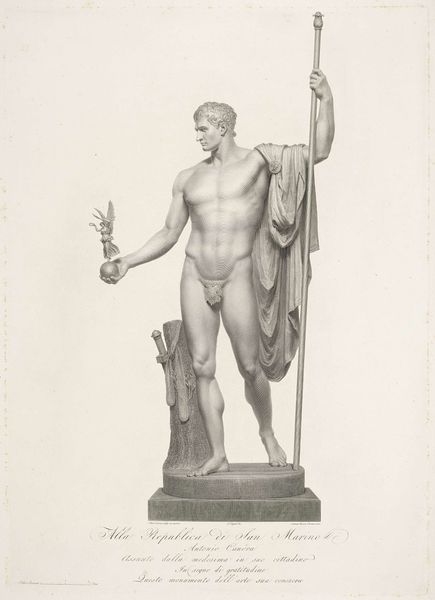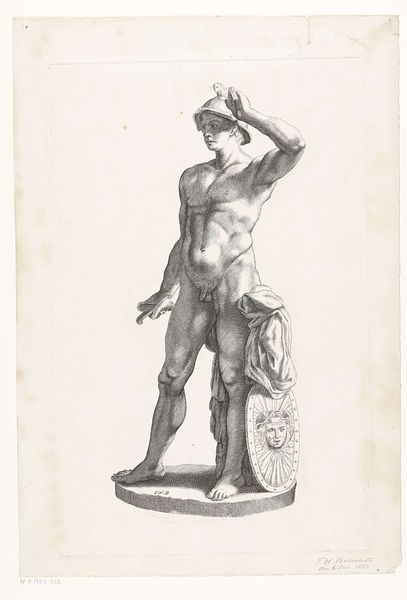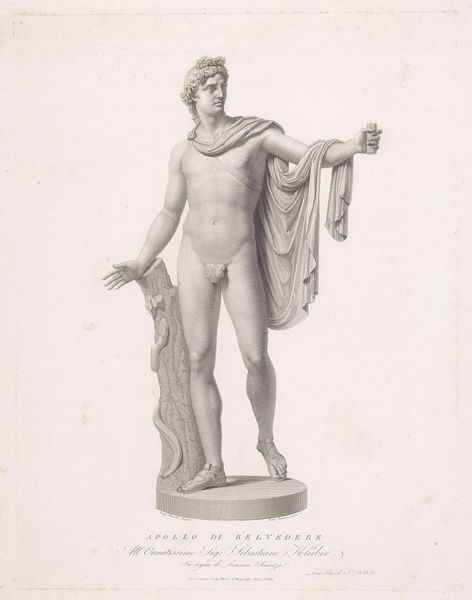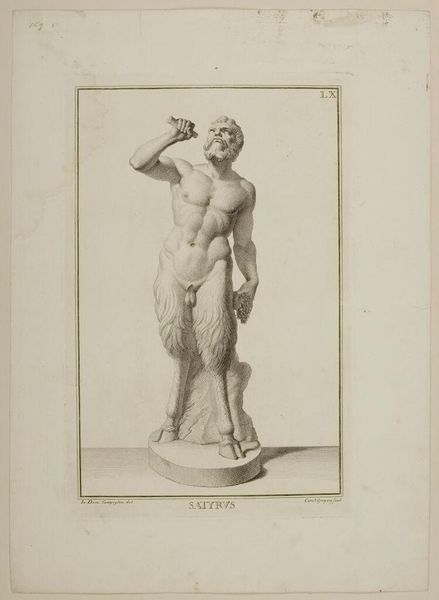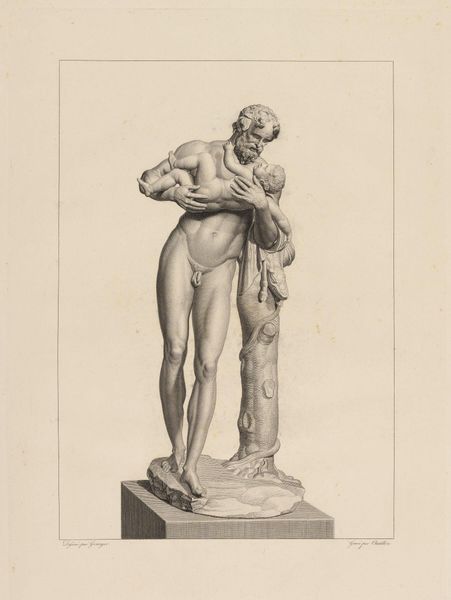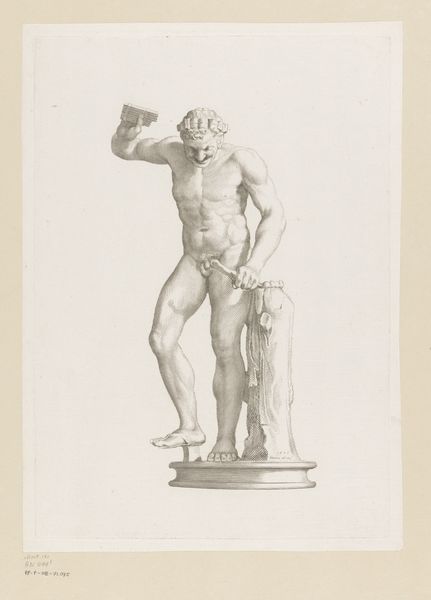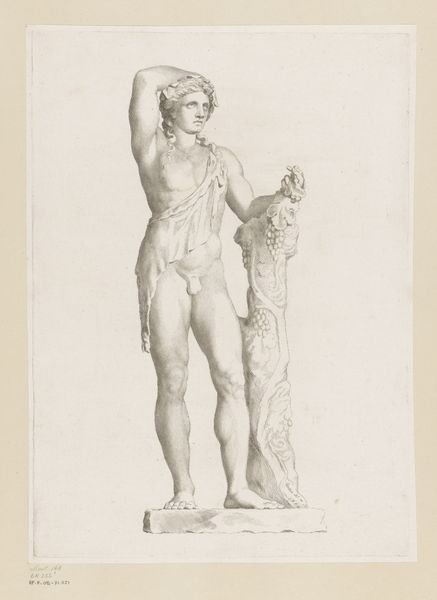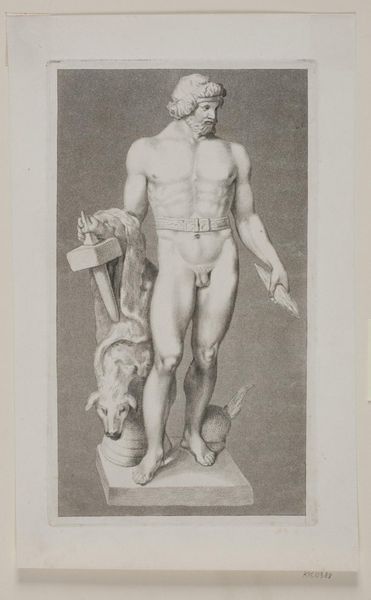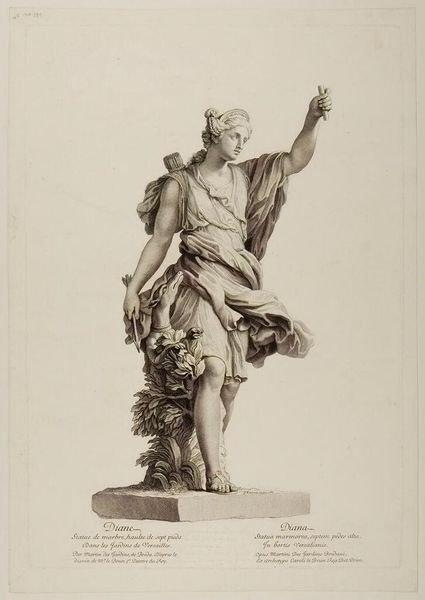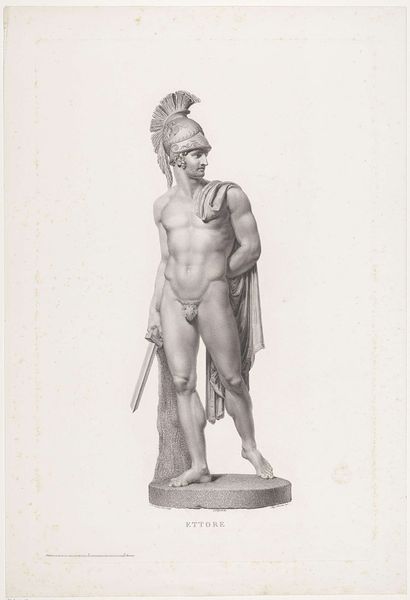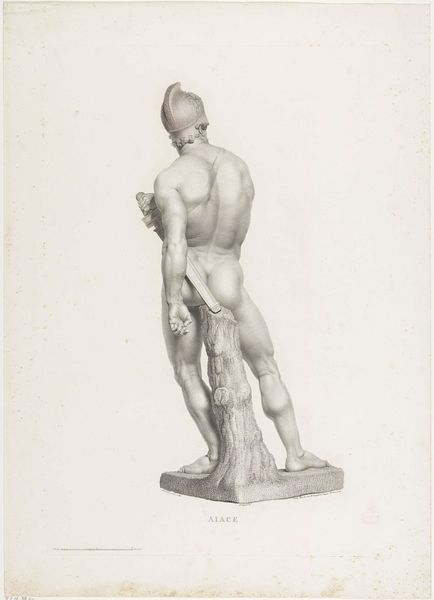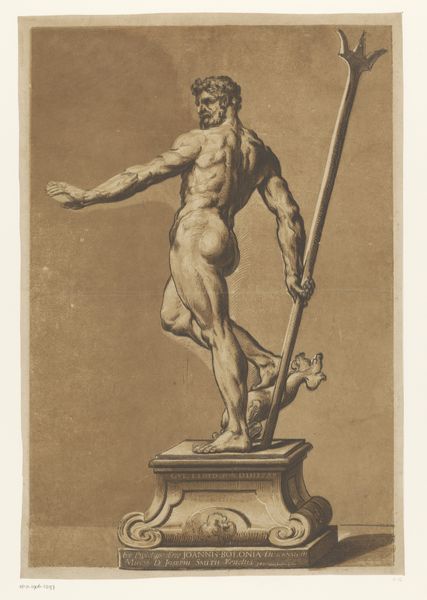
Copyright: CC0 1.0
Curator: The Harvard Art Museums present Antonio Ricciani's "Napoleon as Jupiter." The stoic presentation gives me pause, but it's immediately apparent that this is more than just portraiture. Editor: Indeed. The classical idealization of Napoleon, presenting him as Jupiter, speaks volumes about the emperor's self-image and the propaganda machine surrounding him. It's a deliberate attempt to connect his rule with the divine authority of ancient Rome. Curator: But the unidealized, almost bland facial features undermine that effect, don’t you think? It feels like an attempt to normalize power, perhaps a reassurance to the public that even a god-like leader is still, at the end of the day, a man. Editor: Perhaps. Or it speaks to the more general phenomenon of portraiture. Whether we look at Kehinde Wiley’s depictions of Obama, or Holbein’s depictions of Henry VIII, we see that art reflects power. This image continues that discourse. Curator: It makes you wonder how power reshapes identity and iconography, doesn't it? I find this image deeply revealing. Editor: Absolutely. Ricciani's work opens a window into the political theater of the Napoleonic era. It’s really quite revealing.
Comments
No comments
Be the first to comment and join the conversation on the ultimate creative platform.
